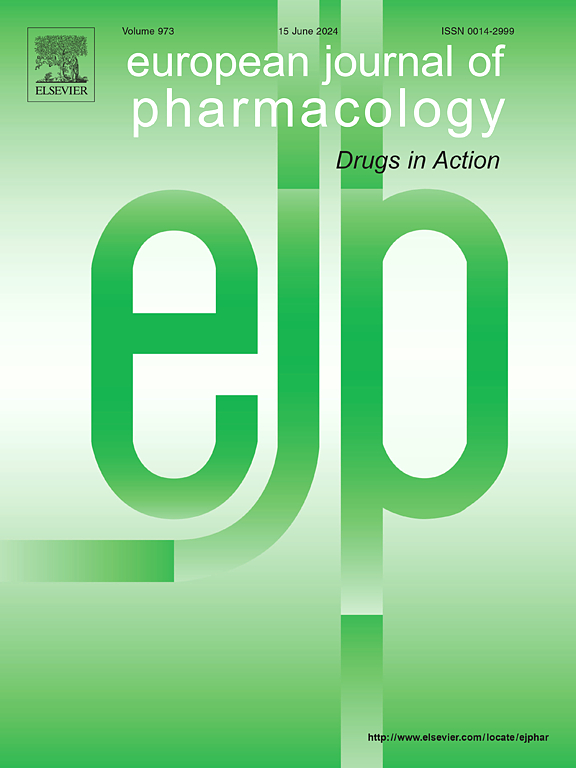HDAC6抑制剂WY118单独或联合氯化锂的抗阿尔茨海默病作用:通过调节tau磷酸化和MAPK信号来协同抑制铁下沉
IF 4.2
3区 医学
Q1 PHARMACOLOGY & PHARMACY
引用次数: 0
摘要
阿尔茨海默病(AD)是一种复杂的神经退行性疾病,目前的治疗主要是提供症状缓解。鉴于阿尔茨海默病的病理生理是多方面的,针对阿尔茨海默病相关发病机制中涉及的多种分子途径的多模式治疗策略是阻碍阿尔茨海默病进展的实用途径。在这项研究中,我们评估了HDAC6抑制剂WY118单独或与GSK-3β抑制剂氯化锂(LiCl)联合抗阿尔茨海默病的作用,以协同抑制铁下沉。化合物WY118与LiCl在谷氨酸和链脲佐菌素诱导的AD细胞模型中均表现出显著的协同作用。研究结果表明,化合物WY118,特别是与LiCl联合,通过协同抑制铁下垂表现出有效的抗阿尔茨海默病作用。作用机制研究表明,联合治疗可显著降低tau磷酸化,抑制p38 MAPK信号传导。这种联合疗法有望开发出更有效的阿尔茨海默病治疗方法。本文章由计算机程序翻译,如有差异,请以英文原文为准。

Anti-Alzheimer effects of an HDAC6 inhibitor, WY118, alone and in combination of lithium chloride: Synergistic suppression of ferroptosis via the modulation of tau phosphorylation and MAPK signaling
Alzheimer's disease (AD) is a complex neurodegenerative disorder, and current therapies mainly offer symptomatic relief. Given that the pathophysiology of AD is multifaceted, a multimodal therapeutic strategy targeting multiple molecular pathways implicated in AD-related pathogenesis represents a pragmatic avenue for impeding the advancement of AD. In this study, we evaluated the anti-Alzheimer effects of an HDAC6 inhibitor WY118, both alone and in combination with lithium chloride (LiCl), a GSK-3β inhibitor, to synergistically suppress ferroptosis. The combination of compound WY118 and LiCl demonstrated significant synergistic effects in both cellular models of AD induced by glutamate and streptozotocin. The findings suggest that compound WY118, in particular in combination with LiCl, exhibits potent anti-Alzheimer effects by synergistically suppressing ferroptosis. Studies on the mechanism of action indicated that the combination treatment significantly reduced tau phosphorylation and inhibited p38 MAPK signaling. This combination therapy holds promise for developing more effective treatments for AD.
求助全文
通过发布文献求助,成功后即可免费获取论文全文。
去求助
来源期刊
CiteScore
9.00
自引率
0.00%
发文量
572
审稿时长
34 days
期刊介绍:
The European Journal of Pharmacology publishes research papers covering all aspects of experimental pharmacology with focus on the mechanism of action of structurally identified compounds affecting biological systems.
The scope includes:
Behavioural pharmacology
Neuropharmacology and analgesia
Cardiovascular pharmacology
Pulmonary, gastrointestinal and urogenital pharmacology
Endocrine pharmacology
Immunopharmacology and inflammation
Molecular and cellular pharmacology
Regenerative pharmacology
Biologicals and biotherapeutics
Translational pharmacology
Nutriceutical pharmacology.

 求助内容:
求助内容: 应助结果提醒方式:
应助结果提醒方式:


